牛津高中英语模块9Reading
- 格式:pptx
- 大小:3.26 MB
- 文档页数:57
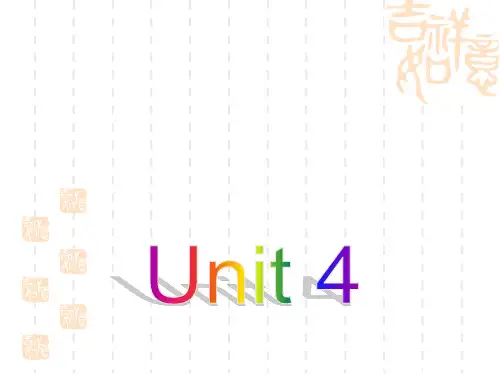
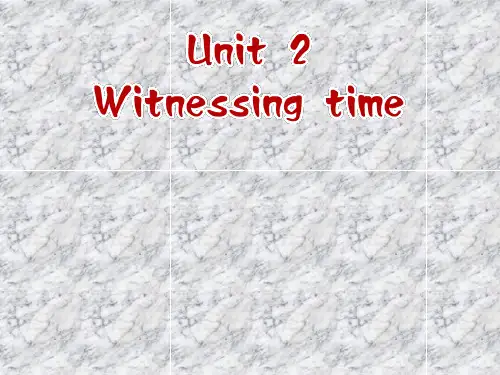
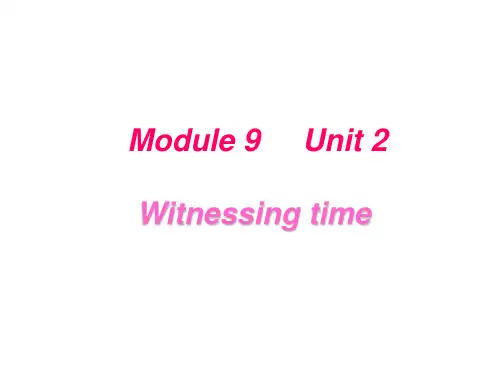
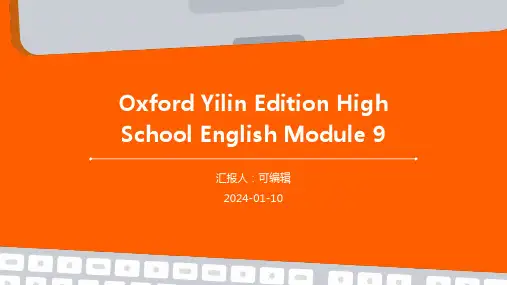
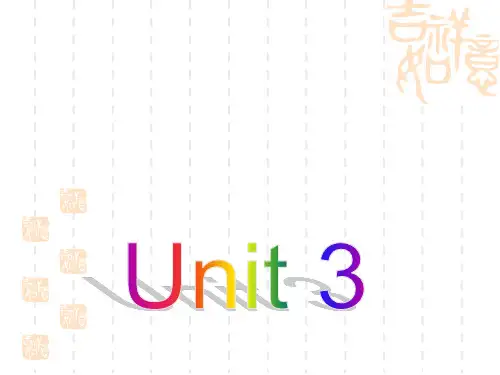

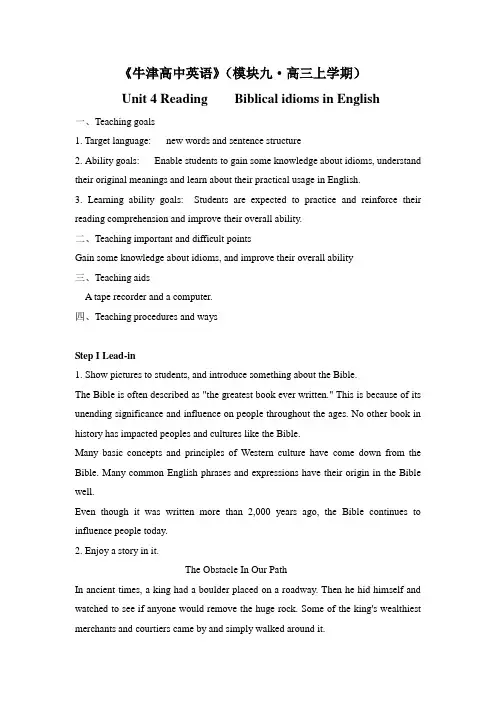
《牛津高中英语》(模块九·高三上学期)Unit 4 Reading Biblical idioms in English一、Teaching goals1. Target language: new words and sentence structure2. Ability goals: Enable students to gain some knowledge about idioms, understand their original meanings and learn about their practical usage in English.3. Learning ability goals: Students are expected to practice and reinforce their reading comprehension and improve their overall ability.二、Teaching important and difficult pointsGain some knowledge about idioms, and improve their overall ability三、Teaching aidsA tape recorder and a computer.四、Teaching procedures and waysStep I Lead-in1. Show pictures to students, and introduce something about the Bible.The Bible is often described as "the greatest book ever written." This is because of its unending significance and influence on people throughout the ages. No other book in history has impacted peoples and cultures like the Bible.Many basic concepts and principles of Western culture have come down from the Bible. Many common English phrases and expressions have their origin in the Bible well.Even though it was written more than 2,000 years ago, the Bible continues to influence people today.2. Enjoy a story in it.The Obstacle In Our PathIn ancient times, a king had a boulder placed on a roadway. Then he hid himself and watched to see if anyone would remove the huge rock. Some of the king's wealthiest merchants and courtiers came by and simply walked around it.Many loudly blamed the king for not keeping the roads clear, but none did anything about getting the big stone out of the way. Then a peasant came along carrying a load of vegetables. On approaching the boulder, the peasant laid down his burden and tried to move the stone to the side of the road. After much pushing and straining, he finally succeeded.As the peasant picked up his load of vegetables, he noticed a purse lying in the road where the boulder had been. The purse contained many gold coins and a note from the king indicating that the gold was for the person who removed the boulder from the roadway. The peasant learned what many others never understand. Every obstacle presents an opportunity to improve one's condition.Step II Fast readingscan the Internet article on page 50 quickly and find the answers to the Knowledge questions(细节复述型问题)which elicit factual answers and recognition of information, words, phrases or sentences in the passage as answers.1). What is an idiom?---An idiom is a group of words or an expression whose meaning often cannot be understood by looking at the meanings of the separate words in it.2). Which languages was the Bible first written in?---In Hebrew.3). Which idiom is often used to describe children?---Apple of their parents’ eyeStep III Careful reading1. Listen to the recording and follow, then read it carefully and answer the following questions in Part C1. These questions interpret some information in the passage, so finish them and try to improve the students’ ability to find specific information. 1). Why does the Bible have a lot of idioms?---Because the Bible was first written in Hebrew and then translated into Greek, and many idioms are used in both of them. Because the Bible was translated into English hundreds of years ago, many Hebrew or Greek idioms have become part of the English language.2). What did ‘by and by’originally mean in the Bible?---Immediately.3). What does ‘by and by’mean today?---Before long.4). How many years ago was the Bible translated into English?---Hundreds of years ago.5). What does ‘feet of clay’mean?---There is a hidden weakness in somebody whom we admire or respect.6). Which animals are featured in the idioms in the articles?---Bird and clay.7). Which foods are included in the idioms in the article?---Apple and salt.8). How is studying idioms useful in language learning?---You can improve your comprehension and develop a high level of competence in level of competence in communication skills.2. Complete Part C2, and it serves as a strengthening activity.Step IV Reading strategy: understanding analogies●When trying to understand idiom, it is often helpful to consider the use of analogy, which is a particular type of comparison.●Although analogy can be very hard to guess, clues can often be found in the context.●You should first look at the idiom and create an image in your mind.●Then look at the context to find out the context to find out the analogy and the message.Step V Usage of reading strategy1. I took my mother’s car without asking for permission. She is angry at me. I am in hot water now!2. Don’t tell anyone else that I am looking for a new job. Please keep it under your hat.3. We were not expecting to see Joan. When she suddenly arrived out of the blue, wewere all surprised.Answers: 1. (in trouble) 2. (not tell anybody the secret)3. (suddenly; unexpected)Step VI consolidation3. Finish Part D. Guess the meanings of new words from the context.Answers: 8. h 9. g4 Finish Part E to review and consolidate knowledge in the text.Answers: (1) group (2) idioms (3) translated (4) Green (5) before long (6) underline (7) concept (8) weakness (9) bird (10) hiddenStep VII Discussion●What do you think about English idioms that come from the Bible?●Do you know the origins of any Chinese idioms? What are they?●Do you think understanding idioms is an important part of language learning? Why or why not?Step VIII Language points:1. (Lines 1-2) An idiom is a group of words or an expression whose meaning often cannot be understood by looking at the meanings of the separate words in it.1) Separate here is use d as an adjective with the meaning ‘each or individual (word in the group of words or the expression)’ or ‘ not together’..●The twins share one room, but they sleep in separate beds.●Germany is one nation, but it used to be two separate countries for more than 30 years after World War Ⅱ.2) Separate can also be used as a verb, which means ‘to become apart’or ‘to be not together’..●It is extremely hard to separate two fighting oxen.●The mountain range separates the two countries.Have a try:●As we joined the big crowd I got _____ from my friends.A. separatedB. sparedC. lostD. missed●Students should always remember theory and should not at all be _____ from practice.A.dividedB. stoppedC. separatedD. operated2. (Lines 5-6) …, and unless you recognize when an idiom is being used, you can easily misunderstand what you read or hear spoken.◆The word unless is a conjunction, which means ‘ if not’ or ‘except if’ and is used to introduce an adverbial clause of condition..●Un less I’m mistaken, she was at work yesterday.●You won’t get paid for time off unless you have a doctor’s note.●_______ invited, you should keep silent.A. WhenB. IfC. UnlessD. Since3. (Lines 33-35) For instance, children are often re ferred to as the ‘apple of their parents’ eye’, meaning that their parents love them very much and are very proud of them.1) The preposition as is something used with the phrase refer to, which means ‘to call somebody as’.. He is referred to as the naughtiest student in his class.2) Refer to◆‘Refer to sb/sth’ means to mention or speak about sb/sth.I promised not to refer to the matter again.◆‘Refer to sb/sth’ means to describe or be connected to sb/sth..This paragraph refers to the events of last year.◆‘Refer to sb/sth’ means to look at sth or ask a person for information.You may refer to your note if you want.◆Have a try:The incident ____ took place last Monday.A. referredB. referringC. referred toD. referring toHomework:1. Read the article again.2. Note the important knowledge in the text.Part A1 and A 2 on page 124 in Workbook so they will have more chances to use some useful words and phrases leant in this section.。
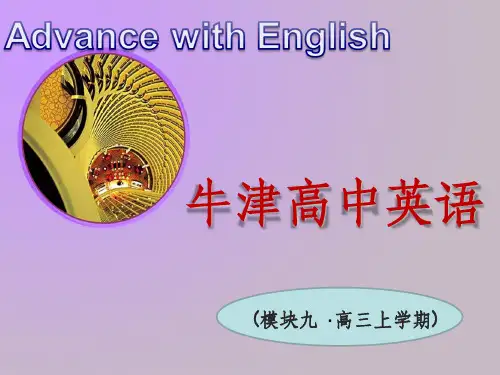
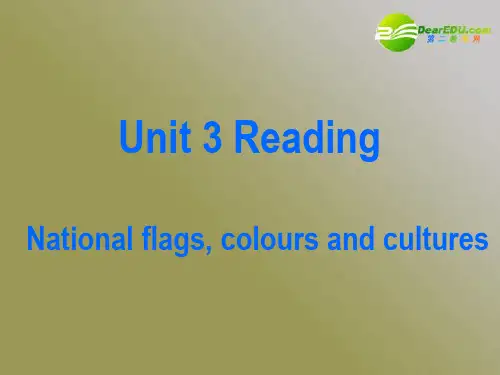
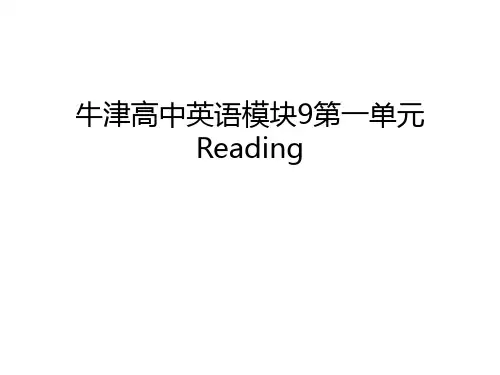
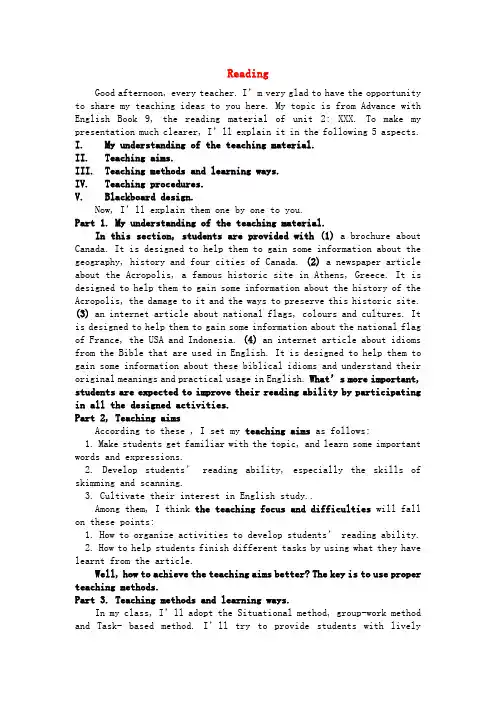
ReadingGood afternoon, every teacher. I’m very glad to have the opportunity to share my teaching ideas to you here. My topic is from Advance with English Book 9, the reading material of unit 2: XXX. To make my presentation much clearer, I’ll explain it in the following 5 aspects.I.My understanding of the teaching material.II.Teaching aims.III.Teaching methods and learning ways.IV.Teaching procedures.V.Blackboard design.Now, I’ll explain them one by one to you.Part 1. My understanding of the teaching material.In this section, students are provided with (1) a brochure about Canada. It is designed to help them to gain some information about the geography, history and four cities of Canada. (2) a newspaper article about the Acropolis, a famous historic site in Athens, Greece. It is designed to help them to gain some information about the history of the Acropolis, the damage to it and the ways to preserve this historic site.(3) an internet article about national flags, colours and cultures. It is designed to help them to gain some information about the national flag of France, the USA and Indonesia. (4) an internet article about idioms from the Bible that are used in English. It is designed to help them to gain some information about these biblical idioms and understand their original meanings and practical usage in English. What’s more important, students are expected to improve their reading ability by participating in all the designed activities.Part 2, Teaching aimsAccording to these , I set my teaching aims as follows:1. Make students get familiar with the topic, and learn some important words and expressions.2. Develop students’ reading ability, especially the skills of skimming and scanning.3. Cultivate their interest in English study..Among them, I think the teaching focus and difficulties will fall on these points:1. How to organize activities to develop students’ reading ability.2. How to help students finish different tasks by using what they have learnt from the article.Well, how to achieve the teaching aims better? The key is to use proper teaching methods.Part 3. Teaching methods and learning ways.In my class, I’ll adopt the Situational method, group-work method and Task- based method. I’ll try to provide students with livelysituations and create a relaxing class atmosphere and then they can gain the knowledge by self work and group work. What’s more, I’ll take good advantage of the recorder and the multi-media to make the class lively and relaxing.Part 4. Teaching procedures.Now, I’d like to ta lk about my teaching procedures. I want to carry them out in the following steps:Step 1. Lead-in. ( 6 minutes )1-2, show students some pictures about Canada /Greece on the slides, let them guess which country the things in the pictures belong to. Ask students what they will think of when talking of Canada / Greece.3-4, show students some pictures about different national flags / religious people on the slide and ask them to match the flags with their countries / the people with their religions. Ask students what they will think of when seeing our national flag / talking of Buddism?By doing this, I hope to arouse students’ interest and prepare them for the following study.Step 2. ListeningListen to the tape of the article and answer the questions about T orF on the slides.The purpose of this step is to practice Ss’ listening ability by gaining a general idea of the article.Step 3. Study the reading strategyAsk students read the reading strategy aloud and make sure they fully understand it. If necessary, I will explain it.This step is designed to help Ss clear away some obstacles in reading. Step 4. Reading1.Ask students to scan the article to grasp the main idea and finishPart C1.2.Ask students to read the article carefully and search for therelated details to finish Part C2.The purpose of this step is to develop Ss’ reading ability and the ability to use the information they have gained to finish different tasks. Step 5. Consolidation1. Ask Ss to read the instructions for Part F and continue the dialogue in pairs after the example. Choose some pairs to act out their dialogues.2. Choose one topic of the 3 questions to make a discussion in group of 4 students; Encourage every student to express their opinions freely.I will walk around the classroom to offer necessary help. Choose some students to make the presentation.This step is designed to deepen Ss’ understanding of the article, practice their oral English and develop their ability in working cooperatively.Step 6. HomeworkFinish Part A and Part B in workbook.Part 5. Blackboard design.In the upper side of the blackboard is the title of this lesson: XXX. On the right side is the reading strategy. On the left side. I will write down some wonderful answers to the questions in the duscussion.That’s all for my teaching ideas. Thank you for listening.。